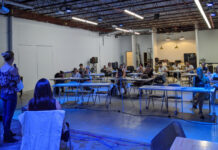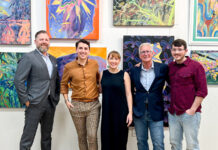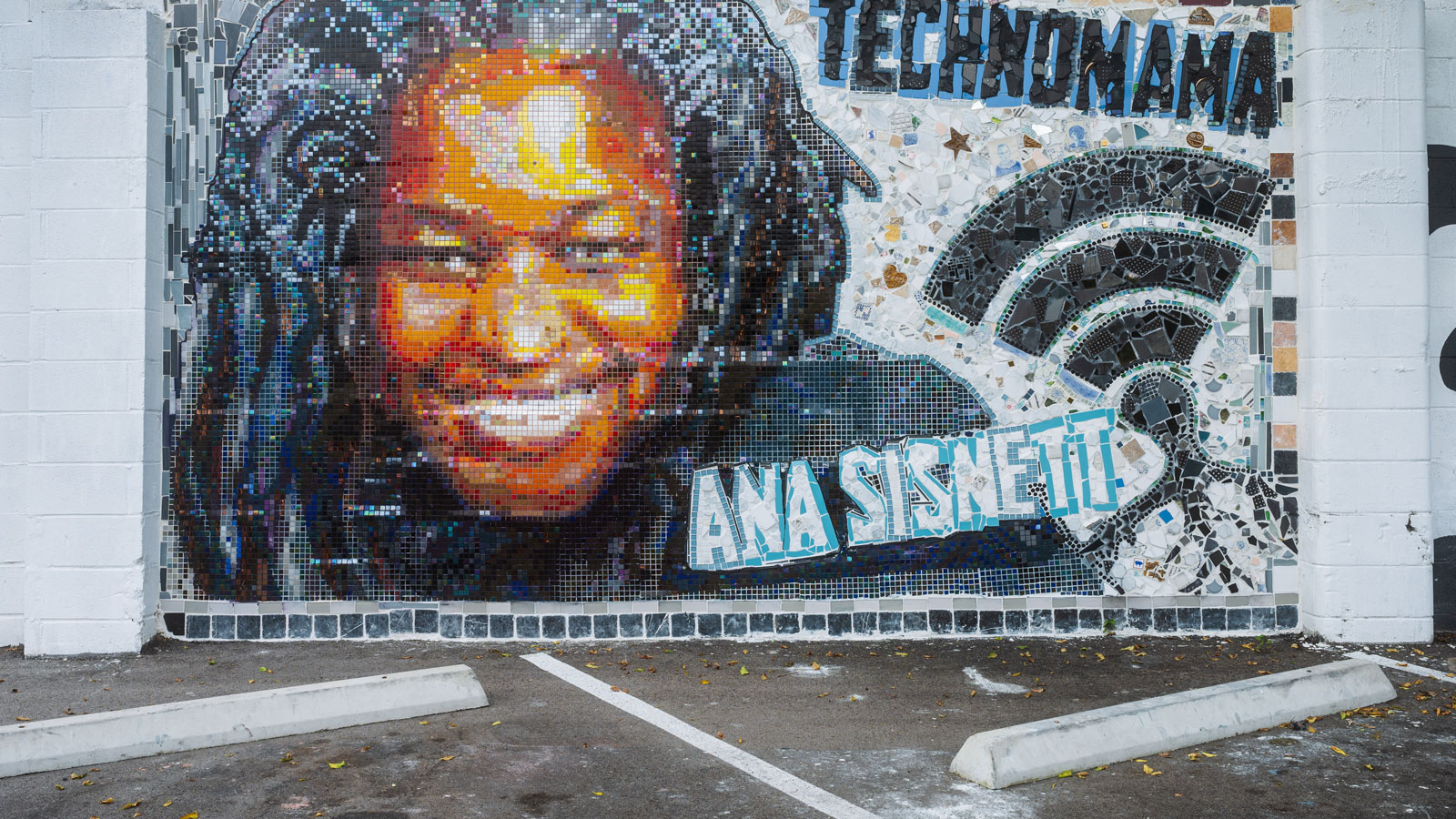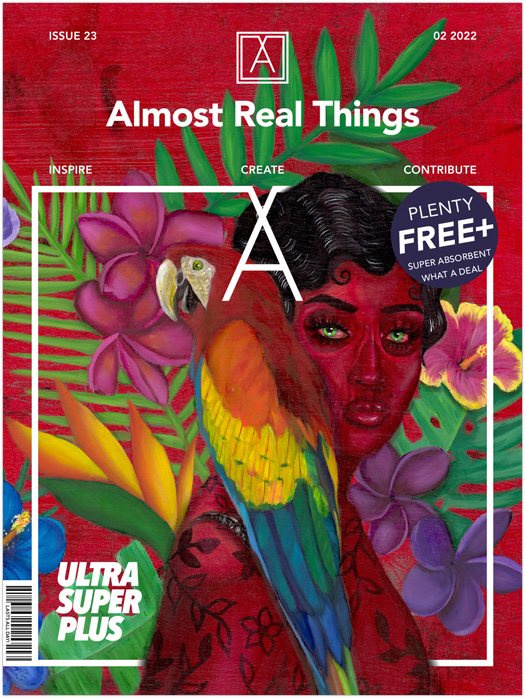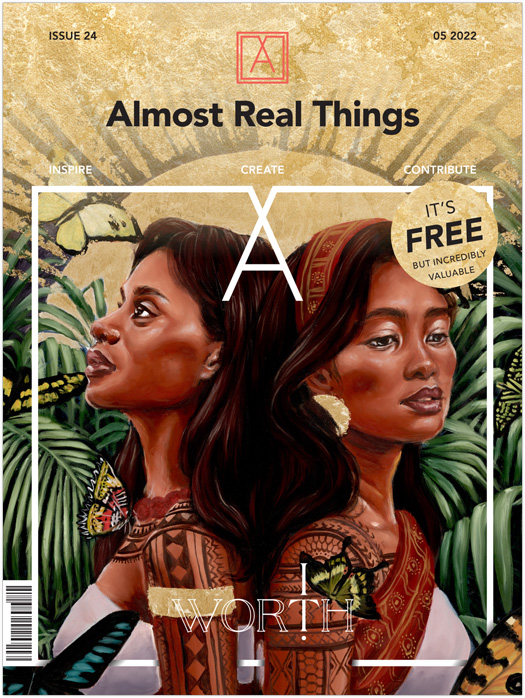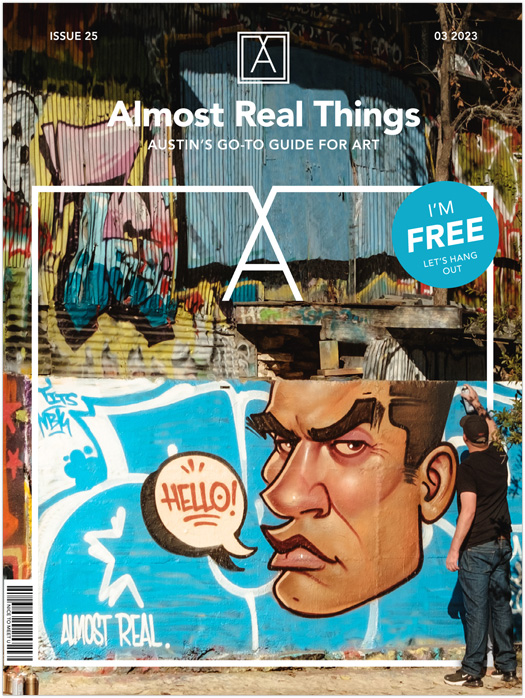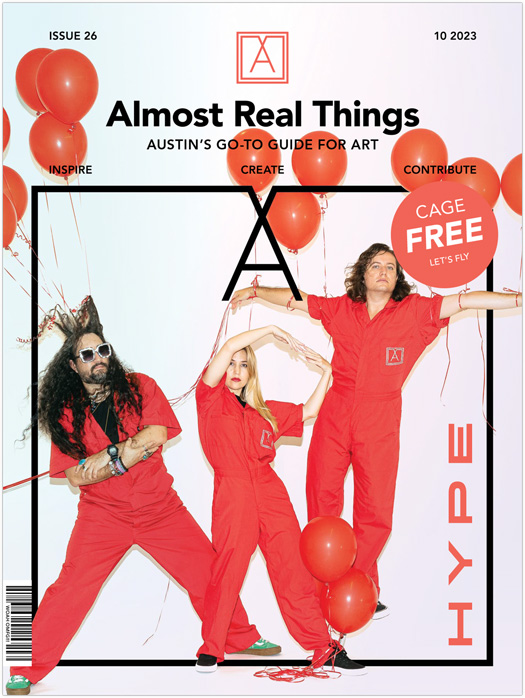Since 2019, The Mosaic Workshop has empowered the community and activated spaces through mosaic murals, workshops & grassroots projects.
What started as duo between co-founders J Muzacz and Carmen Rangel, has expanded to team of powerhouse artists who put accessibility and community-building at the forefront.
But here’s what we really think you should know: they’re a group that gets shit done.
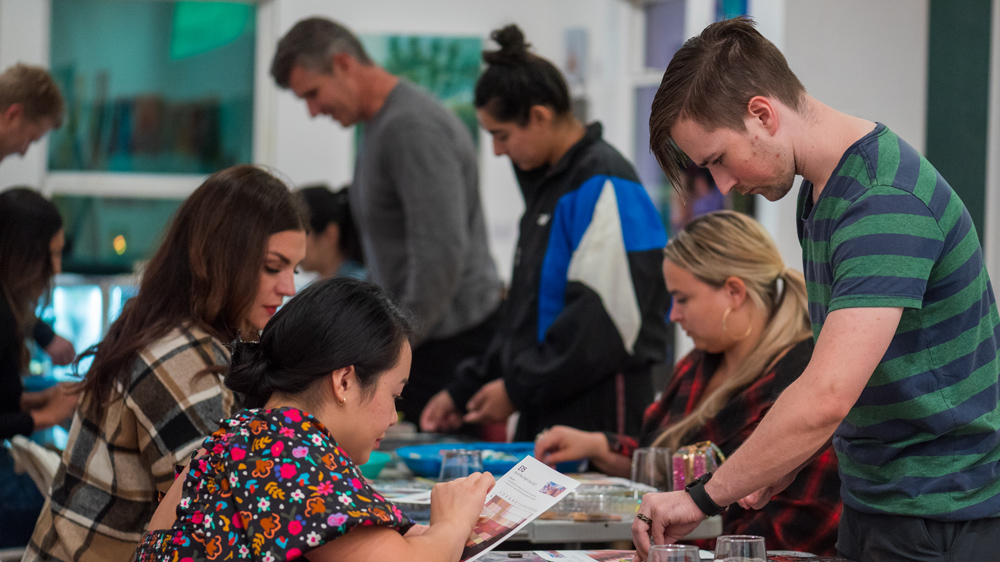
Whether it’s hosting hands-on private and public workshops, facilitating on-going series, like The Legends Project with Latinitas, to honor women of color who have impacted Austin, or producing gigantic mosaic murals, this team is on a mission to create meaningful art with staying power.
They already have the passion to ignite the community. All they need is a wall. They’ll figure out how to make all of the other pieces fit together.
For Issue 25 “Hello!” I interviewed each member of The Mosaic Workshop with an Inside the Actor’s Studio-style questionnaire to get to know them a bit better.
Carmen was enveloped into the mosaic scene after assisting J in a large, mosaic install.
“It was crazy, I was sore, I was tired. But then I fell in love with the art form.”
They pursued teaching workshops together with the goals of giving people the experience of working with mosaics in a low cost, accessible way. Getting people from all different backgrounds and experience levels was invigorating. And now they can’t stop.
With their two forces combined, the Mosaic Workshop has grown and this year Carmen is pursing larger mural projects and facilitating portrait projects.
What is your favorite word?
Word. Or mango.
What is your least favorite word?
Millennial. It took me forever to say it.
What tool or material do you love to use?
I like paint.
What tool or material do you hate to use?
I don’t like the shitty spray paint.
Who or what is your biggest influence?
There’s a lot and I’ve gone through a lot of phases and so there’s an artist, shrineon, he does very ornamental but simple murals and I’m drawn to them for the use of colors, materials and because they’re very calming.
How do you motivate yourself?
I spend a lot of time outside. I know if I’m not feeling super creative or don’t know what to work on, I’ll take a break and go outside–swim, walk, travel.
What’s your favorite part of the mosaic process?
I like all of it, even the bad part. During every project, I have a moment where i’m freaking out and then it’s alwasy right after that where I feel like it’s coming together
How do you know when a piece of art is finished?
You never really know but at some point you have to call it. Sometimes I’m at a moment where I could change it but it’s not worth it and I learn from it and apply it to the next project.
What have you sacrificed to pursue your passion?
A lot of artists do. We sacrfice a lot of normal relationships – with partners, family or friends. Your relationships are challenging because people can understand your lifestyle or timeline. But I’ve gained a lot of things that other people don’t have as well.
What profession other than art would you like to pursue?
Interior design, that was another thing I wanted to do. Or some kind of social work.
What do you wish you had learned sooner?
Maybe painting or being professional. It took me a while to accept that I’m doing it and be more professional and answer my emails and stuff. I’ve been creating my whole life but I didn’t start painting until out of high school.
You might catch J Muzacz placing tiles on a giant wall. Or teaching a workshop. Or distributing his ATX Urban Art book. He’s a fixture of the Austin community and he’s not stopping anytime soon.
The Mosaic Workshop is known for their weekend and private workshops but their Legends project is one that they’re passionate about. The series, which already has completed 36 portraits is a part of a larger mission to show the potential of grassroots organization and to highlight women of color.
“The mission was created as grassroots public art without the bureaucracy of the city and for the artists, community and partners to take the power back: raise the money, make the art and get a wall for it. You don’t have to ask anyone’s permission just make it suitable for the exterior environment. It’s a way to create a platform for emerging public artists.”
It’s an organic collaboration. The best kind.
What is your favorite word?
Enchilada.
What is your least favorite word?
Ointment.
What tool or material do you love to use?
Tile dippers, razorblades and sharpies. Duct tape is a close 4th.
What tool or material do you not like to use?
Watercolors.
Who or what is your biggest influence?
People and nature.
How do you motivate yourself?
Come up with really ambitious, ridiculous project ideas. Or stay uncomfortable.
What’s your favorite part of the mosaic/art process?
Finishing it.
How do you know when a piece of art is finished?
You don’t, you just walk away.
What have you sacrificed to pursue your passion?
Money, health, freedom.
What profession other than art, would you like to pursue?
Architect or DJ. Also a photographer or researcher.
What do you wish you had learned sooner?
Finances. Like how to charge properly for what you do, how to make money at your craft. And to not look at money as an evil.
Hope Hummingbird moved to Austin in 2020, after living and teaching ceramics in Philadelphia for years. She used to send J her ceramic “mistakes” to use in his mosaics. Though perception is everything and she often discovered them, unaltered in his public art around the city.
Today, she’s working on portraits of Austin artists. She uses porcelain to highlight their stories and give them lasting power in an environment where artists are being displaced from their work spaces. It’s her goal to uplift people with portraits.
What is your favorite word?
Soul.
What is your least favorite word?
Hate.
What tool or material do you love to use?
Porcelain.
What tool or material do you hate to use?
Sewing.
Who or what is your biggest influence?
Judy Chicago. Also uplifting people and reacting to negative forces with positive forces.
How do you motivate yourself?
I’m motivated by obsessive research. I recently went down a total wormhole. Did all of that go into the portrait? No. My original sketch is not even close to the final. But the undercurrent shows up even if people can’t see it.
What’s your favorite part of the mosaic/art process?
I love painting the portrait. I love when I put it all together and see it altogether.
How do you know when a piece of art is finished?
When it comes out of the glaze fire, there is nothing I can do about it. That’s finished. That’s the best part of ceramics.
What have you sacrificed to pursue your passion?
Stability.
What profession other than art, would you like to pursue?
Archeologist.
What do you wish you had learned sooner?
Don’t care what people think. It doesn’t matter.
Lolita became involved with The Mosaic Workshop through their portrait series with Latinitas Legends project. She’s now helping continue that project along with instructing workshops and facilitating larger projects.
Interestingly enough, her background is in culinary and business. She’s in love with spreadsheets.
“I love spreadsheets and spreadsheets love me.”
Her life has moved in many different directions, from medical school and forensics to hosting the ATX Artist Social podcast. This year her podcast will be back in full force, focusing more on professional development.
What is your favorite word?
Good shit.
What is your least favorite word?
Colored.
What tool or material do you love to use?
Fabric all day. I like to hand stitch.
What tool or material do you hate to use?
I loathe anything to do with packaging.
Who or what is your biggest influence?
Definitely my son. Motherhood.
How do you motivate yourself?
Music. It’s the soundtrack of my life.
What’s your favorite part of the mosaic process?
For mosaics, it’s all relaxing. I get to not think and just do. Same with sewing. I like more of the design process and the layout of everything and seeing the finished product.
How do you know when a piece of art is finished?
Walk away. To me, I’m never done.
What have you sacrificed to pursue your passion?
Sanity. I’ve also sacrificed some time with my kid and family time.
What profession other than art would you like to pursue?
I would like to be in interior design.
What do you wish you had learned sooner?
Nothing. It came when it was supposed to. That’s how I view everything. The past cannot be changed.
Zoe Axelrod is one of the creative masterminds behind the ATX Urban Art book. Last year she started helping out with the workshops.
“I was the tape girl for a while.”
In addition to spending hours taping, she redesigned the Mosaic Workshop website and contributed to this very issue!
What is your favorite word?
Bubbly.
What is your least favorite word?
Grey.
What tool or material do you love to use?
My computer. And 14 gauge aluminum fencing wire from Home Depot.
What tool or material do you hate to use?
Wood carving, but I could love it.
Who or what is your biggest influence?
My Mom, she’s a magazine designer and I wouldn’t be doing this if it wasn’t for her.
How do you motivate yourself?
Deadlines and exterior pressure.
What’s your favorite part of the mosaic process?
I think looking back on it. The process is always fun, but when it’s done it’s like wow. I’m able to say I like how this came together.
How do you know when a piece of art is finished?
It’s hard to say because I don’t call it quits until I truly can’t do anything else to improve it.
What have you sacrificed to pursue your passion?
Time with family because I moved here from Chicago. My Mom is here now but my family is all still up north.
What do you wish you had learned sooner?
I think how to manage my time and take accountability. I’m still not great at it but I know that I’m extrinsically motivated.
Support The Mosaic Workshop and follow them on Instagram


